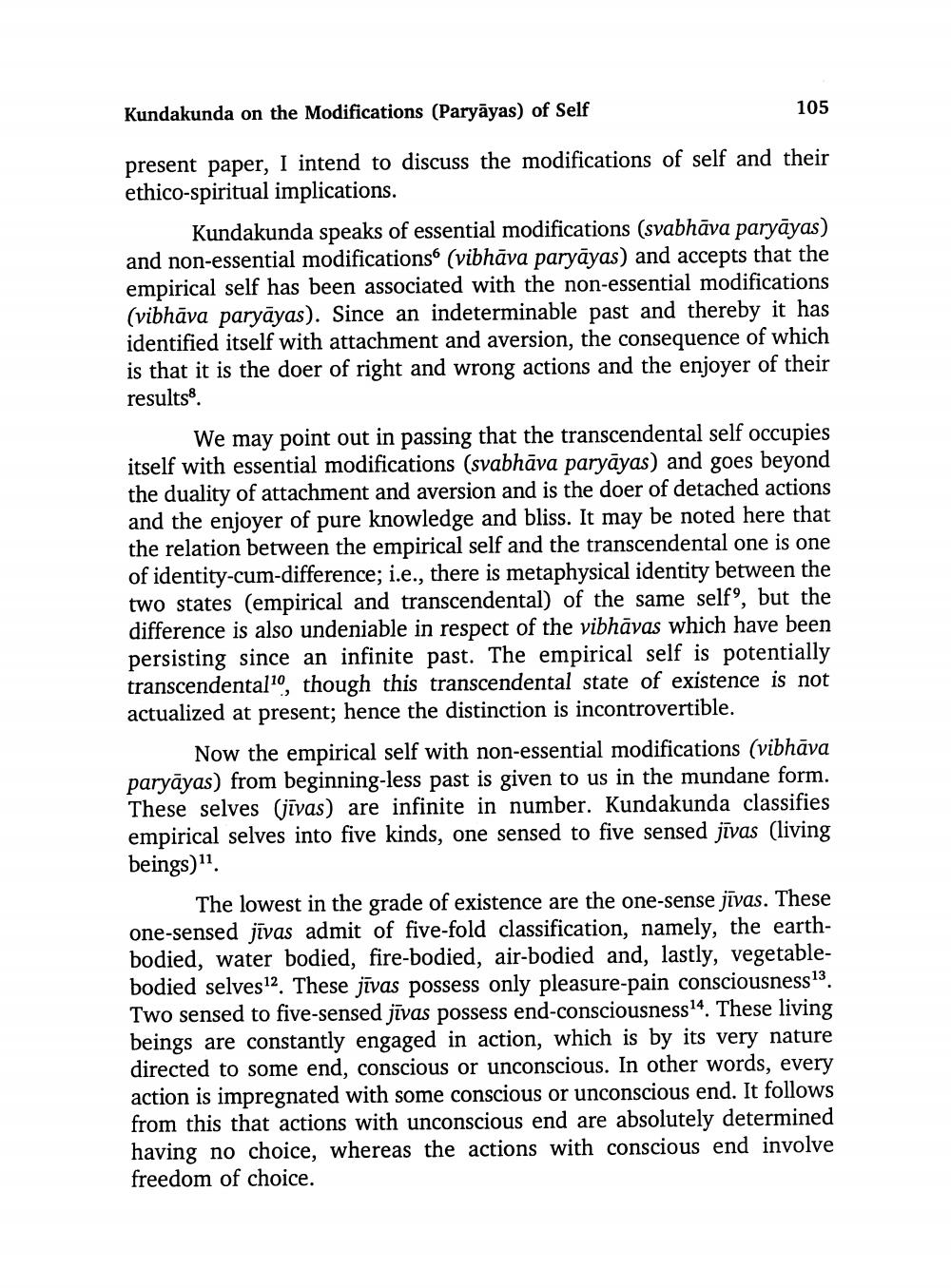________________ Kundakunda on the Modifications (Paryayas) of Self 105 present paper, I intend to discuss the modifications of self and their ethico-spiritual implications. Kundakunda speaks of essential modifications (svabhava paryayas) and non-essential modifications (vibhava paryayas) and accepts that the empirical self has been associated with the non-essential modifications (vibhava paryayas). Since an indeterminable past and thereby it has identified itself with attachment and aversion, the consequence of which is that it is the doer of right and wrong actions and the enjoyer of their results. We may point out in passing that the transcendental self occupies itself with essential modifications (svabhava paryayas) and goes beyond the duality of attachment and aversion and is the doer of detached actions and the enjoyer of pure knowledge and bliss. It may be noted here that the relation between the empirical self and the transcendental one is one of identity-cum-difference; i.e., there is metaphysical identity between the two states (empirical and transcendental) of the same self', but the difference is also undeniable in respect of the vibhavas which have been persisting since an infinite past. The empirical self is potentially transcendental", though this transcendental state of existence is not actualized at present; hence the distinction is incontrovertible. Now the empirical self with non-essential modifications (vibhava paryayas) from beginning-less past is given to us in the mundane form. These selves (jivas) are infinite in number. Kundakunda classifies empirical selves into five kinds, one sensed to five sensed jivas (living beings)'1 The lowest in the grade of existence are the one-sense jivas. These one-sensed jivas admit of five-fold classification, namely, the earthbodied, water bodied, fire-bodied, air-bodied and, lastly, vegetablebodied selves12. These jivas possess only pleasure-pain consciousness13. Two sensed to five-sensed jivas possess end-consciousness14. These living beings are constantly engaged in action, which is by its very nature directed to some end, conscious or unconscious. In other words, every action is impregnated with some conscious or unconscious end. It follows from this that actions with unconscious end are absolutely determined having no choice, whereas the actions with conscious end involve freedom of choice.




